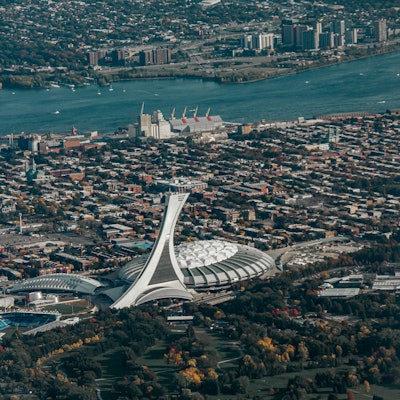
Quebec’s tourism minister says demolition of Olympic Stadium in Montreal would cost $2 billion Canadian (roughly $1.5 billion U.S.), but that estimate is raising questions because other North American cities have torn down stadiums for hundreds of millions of dollars less.
As reported by The Canadian Press, Caroline Proulx recently presented a comparatively cheaper plan to spend $870 million Candadian to replace the unstable and hazardous roof of the stadium built for the 1976 Olympic Summer Games.
Events at the stadium are canceled if more than an inch of snow is forecast due to the roof's fragility, meaning the venue can't hold games or exhibitions for half of any given year.
But throughout the years, Quebec politicians have said that the only reasonable option is to continue maintaining the stadium — even if its roof has never really worked since it was completed in 1987 — than to get rid of the concrete behemoth in the city’s east-end.
“It’s certainly more than I’ve ever heard of for a stadium teardown,” said Victor Matheson, a sports economics professor at College of the Holy Cross in Worcester, Mass.
In Atlanta, Ga., for example, a domed football stadium was replaced in 2017 with the cost of demolition and construction estimated at $1.6 billion U.S..
“The fact that in Atlanta you can build an entirely new stadium and tear down the old one for the same price of just tearing down the one in Montreal seems concerning,” Matheson said.
The cost of bringing down a sports venue can vary widely, according to ConstructConnect:
- In 2017, an Ontario company was awarded $2.1 million to demolish Regina’s 33,350-seat football stadium; other demolitions have been more expensive.
- In Washington, D.C., the Robert F. Kennedy Memorial Stadium was demolished at a cost of US$20 million in 2023, according to local media.
- In New York City, the cost of demolishing the original Yankee Stadium was estimated around US$25 million, The New York Times reported, though the city would spend another US$25 million turning the site into a park.
The Canadian Press report added that the priciest estimated stadium demolition in North America, after the Montreal stadium demolition, might be in Txas, where the projected cost has been as high as almost $80 million U.S. to demolish Houston's Astrodome. However, community members secured state heritage status for the venue, which was the world’s first domed stadium when it was built in 1965.
A 2009 report commissioned by the provincial agency that manages Montreal’s Olympic Stadium put the cost of demolition at up to $700 million — about $965 million when adjusted for inflation.
One of the factors pushing the cost of demolition up, according to the report, is that Olympic Stadium can’t be imploded with explosives. Because the stadium is composed of pre-stressed concrete, it says, controlled explosions could send blocks of concrete flying hundreds of yards, kick up a cloud of dust and lead to a shock wave that could damage an adjacent indoor zoo and a subway tunnel underneath.
Daniele Malomo, a civil engineering professor at McGill University in Montreal, told The Canadian Press that it’s impossible to estimate the cost of the demolition without an extensive evaluation, but he said the use of pre-stressed concrete makes the job more complex.
“The problem in demolishing something like that is that you can’t just cut the concrete,” Malomo said in an interview.
Pre-stressed concrete is less susceptible to cracking and more resistant to bending, but the rebar wire within is under tension and if the concrete is cut, energy will be released, he said.
“It will behave like a bomb, essentially.”
Parc olympique, or Olympic Park, which served as home to several venues during the '76 Games, said in an email that beyond the cost to dismantle the stadium’s 12,000 concrete components, the $2 billion estimate includes $158 million for inflation, $168 million for “minimal site restoration” and $80 million to restore nearby roads after trucks have passed between 20,000 and 30,000 times during the demolition.
Bruno Massicotte, a civil engineering professor at Polytechnique Montréal, said that the infrastructure under the stadium — such as the subway — rules out the use of explosives, but he questioned the estimate nonetheless. “The uniqueness of this structure will necessarily push costs up compared to other types of stadium,” Massicotte wrote in an email. “But the justification for the $2 billion was not presented.”





































